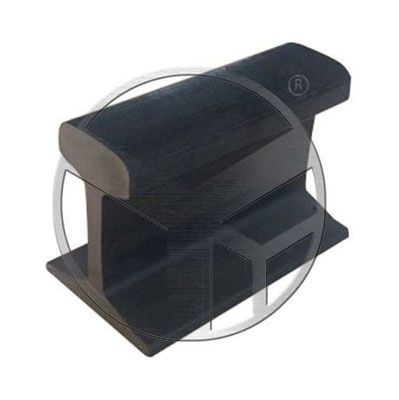Why Steel Is Used For Rail?
Steel is the most widely used material for the construction of railway tracks and for good reason. There are several important factors that make steel the ideal material for this purpose, including its strength, durability, and versatility. In this article, we will explore the many reasons why steel is used for rail and the various benefits that it offers.
First and foremost, steel is incredibly strong and durable. Railway tracks are subjected to a tremendous amount of stress and pressure, as they must support the weight of heavy trains and withstand the impact of constant use. Steel is able to withstand this stress and pressure better than any other material, making it the ideal choice for rail construction.
In addition to its strength, steel is also highly durable. Unlike other materials that may be susceptible to corrosion, wear, and tear, or other forms of damage, steel is able to withstand a wide range of environmental factors and maintain its structural integrity over time. This means that steel rail can last for decades with minimal maintenance or repairs, making it a highly cost-effective choice for railway operators.
Another key advantage of steel rail is its versatility. Steel can be manufactured in a wide range of sizes and shapes to suit the specific needs of different rail systems. Whether you need straight rails, curved rails, switches, crossings, or other specialized components, steel can be customized to meet your requirements.
Beyond these functional advantages, steel rail also offers several other benefits that make it a popular choice for rail operators. For example, steel rail is highly efficient, as it provides a smooth surface for trains to travel on. This reduces friction and wear on the train's wheels, allowing them to operate more efficiently and with less energy. This translates into lower operating costs for railway operators, as they are able to transport goods and passengers more efficiently and at a lower cost.
Another benefit of steel rail is its safety. Because steel is so strong and durable, it is able to withstand the impact of high-speed trains and heavy loads without buckling or collapsing. This means that trains can operate at high speeds with minimal risk of derailment or other accidents, reducing the risk of injury or death to passengers and crew.
In addition to its safety benefits, steel rail also offers environmental advantages. Because steel is so durable, it requires less maintenance and replacement than other materials. This means that fewer resources are required to maintain and repair rail systems, reducing the environmental impact of railway operations. Furthermore, because steel can be recycled, it is a sustainable choice for rail construction. When steel rail reaches the end of its useful life, it can be recycled and reused, reducing the amount of waste that is generated and conserving natural resources.
There are several different types of steel that are used for rail construction, each with its own unique properties and advantages. One of the most commonly used types of steel for rail is carbon steel, which is known for its strength and durability. Carbon steel is also highly cost-effective, making it a popular choice for rail operators around the world.
Another type of steel that is commonly used for rail is alloy steel. Alloy steel is made by combining carbon steel with other metals such as chromium, nickel, and manganese. This creates a steel that is even stronger and more durable than carbon steel, making it ideal for high-traffic rail systems or those that must withstand extreme environmental conditions.
In addition to carbon steel and alloy steel, there are several other types of steel that may be used for rail construction, including stainless steel and weathering steel. Stainless steel is highly resistant to corrosion, making it a popular choice for rail systems that are located near salt water or other corrosive environments. Weathering steel, on the other hand, is designed to develop a protective layer of rust over time, which helps to protect the underlying steel from further corrosion.


评论
发表评论